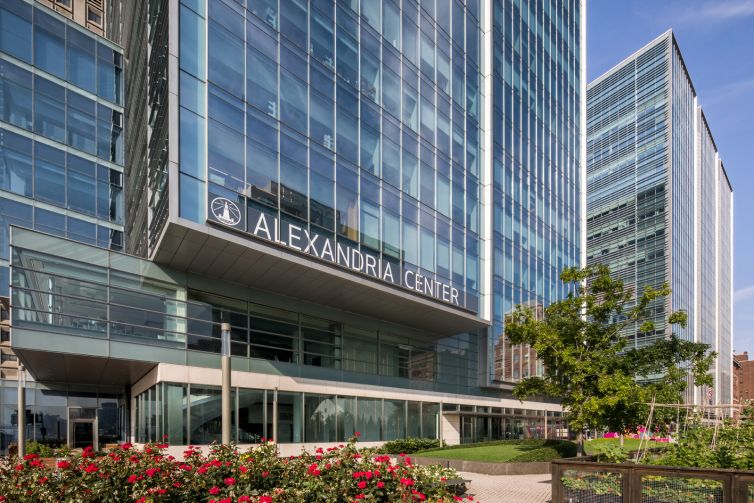Life Sciences Office and Lab Buildings Are Struggling Too: Report
An investment manager that called the office sector’s woes early during COVID now warns of problems in life sciences
By Rebecca Baird-Remba June 22, 2023 11:04 am
reprints
Land & Buildings, the investment management firm that in 2020 raised early alarm bells about the pandemic’s ill effects on the office market, has released a new white paper arguing that attendance at medical office properties is down by 50 percent compared to 2019.
Specifically, it analyzed cellphone data from location analytics company Placer.ai to look at attendance across 435 buildings owned by Alexandria Real Estate, one of the largest publicly traded life science landlords in the country. Attendance at Alexandria’s lab and office buildings in New York City was down 60 percent during the period from March 2022 to February 2023, compared to the pre-pandemic era of March 2019 to February 2020. The real estate investment trust’s Seattle properties were down 59 percent in attendance, while Boston and San Francisco saw declines of 56 and 52 percent, respectively.
Alexandria’s leasing volumes also declined 50 percent annually in the first quarter of 2023, which was reflected in the company’s public filings. Alexandria’s largest tenants, like Bristol Myers Squibb, Pfizer and Sanofi, all have flexible remote-work policies, the report noted. Lab employees are working from home often, and workers that don’t need to be in the lab — like those in accounting, human resources and marketing departments — are behaving like typical office employees by coming in two or three days a week.
“Life science was a pandemic ‘winner’ as public and private money flowed into the sector, propping up life science building rents, occupancies and values over the past three years, in our view,” L&B’s analysts noted. “With a tighter capital markets backdrop and flexible work policies of life science companies, lab space fundamentals appear set to rapidly deteriorate.”
Indeed, commercial brokerage data shows that Land & Buildings may be on to something. The vacancy rate for lab space ticked up 132 basis points nationwide in the first quarter to 6.7 percent, according to the latest life sciences leasing report from CBRE (CBRE). Just shy of 40 million square feet of lab space was under construction in the first quarter of this year, with 18 million square feet set to hit the market in 2023.
In the first quarter, New York City had 2.9 million square feet of life sciences inventory with another 862,000 square feet under construction, according to CBRE. Average asking rents for lab space in the five boroughs were the country’s highest at $109 per square foot. Across the river, New Jersey had 16 million square feet of inventory but no new lab space under construction last quarter. Meanwhile, the Boston area, the country’s largest life sciences market, had 54.4 million square feet of existing inventory with another 16.5 million square feet under construction. Average asking rents there were only slightly cheaper than New York City at $100 per square foot.
Asking rents for lab space nationwide ticked up 3 percent in the first quarter, hitting a record-high average of $65 per square foot across the top 13 life science markets.
Life sciences employment has grown a few percentage points year-over-year but remains below the 8 percent annual growth rate it recorded in April 2021. After life sciences and biotech companies hired at an accelerated rate for two years of the pandemic, employment growth among these firms has begun to track more closely with overall jobs numbers for most other industries.
Venture capital funding for life sciences startups has also fallen significantly from its pandemic-era peak, declining from $6.7 billion in the first quarter of 2021 to $3.6 billion in 2023.
“If the path for life science follows traditional office, we believe Alexandria could trade at valuations similar to coastal office [real estate investment trusts], which suggests 30 to 40 percent downside from current levels,” Land & Buildings wrote in its report.
In May 2020, Land & Buildings, founded by investor Jonathan Litt, issued another white paper. The analysis correctly predicted stubbornly high vacancy rates and a resulting decline in the financial positions of office owners. Its title? “The New York Office Market Is Facing an Existential Hurricane.”
Rebecca Baird-Remba can be reached at rbairdremba@commercialobserver.com


